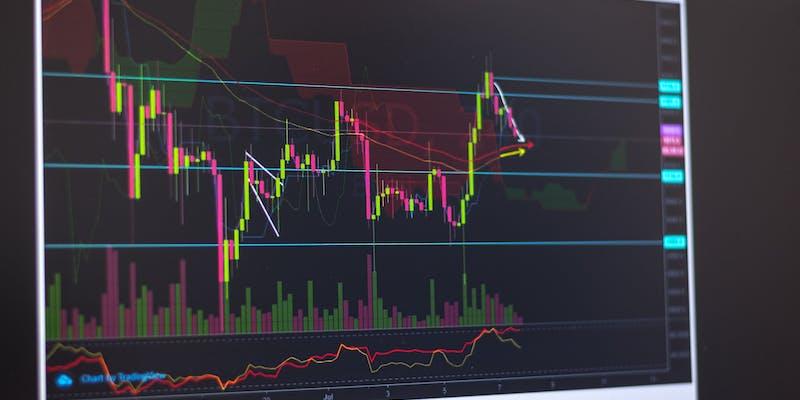The interbank market, an integral part of the global financial system, serves as a platform for financial institutions to engage in currency and derivative trades. This market is critical for the smooth operation of international transactions and finance.
Banks participate in the interbank market mainly for two reasons: first, to manage risks associated with exchange rates and interest rates, and second, to place speculative bets based on their market analysis. This dual function underscores the importance of the interbank market in maintaining financial stability and providing banks with opportunities to balance their portfolios.
Recently, the interbank market has shown a notable shift in its focus. In regions like Beijing, there has been a significant push towards channeling funds into green and low-carbon sectors through interbank transactions.
This pivot towards sustainability reflects the evolving priorities within the interbanking sector. From the start of the year until September, the interbank market facilitated the raising of an impressive $34 billion for these initiatives. This substantial figure highlights the market’s capacity for influencing significant capital movements.
Additionally, in the U.S., the interbank market data rate experienced a noteworthy increase, jumping from a mere 0.14% to a substantial 2.76% in September 2022. This surge indicates the dynamic nature of the interbank market, underscoring its sensitivity to economic trends.
History of the Interbank Market
The history of the interbank market stretches back over centuries, with its roots in the mid-18th century. Initially, it was a simple system based on bilateral trade agreements between banks. However, the 1970s saw a significant change.
In 1971, the US abandoned the gold standard, allowing major nations to free-float their currencies. The modern interbank forex market began with this change.
The interbank market has evolved to reflect global finance's growing sophistication and complexity, adapting to changing economic models and technology. The interbank market is a complex and vital part of the world's financial infrastructure, efficiently transferring currencies across borders.
Critical Components of the Interbank Market

Spot Market
The spot market is a fundamental component of the interbank market, where currencies immediately buy and sell at current market prices. This aspect of inter-banking is vital for businesses and financial institutions needing to execute prompt currency exchanges.
It’s characterized by its high liquidity and the speed at which transactions are completed, making it a critical element for managing short-term currency needs and responding quickly to market fluctuations.
Forward Market
In the interbank market, the forward market plays a pivotal role. It involves agreements to buy or sell a currency at a future date and a predetermined price.
This facet of inter-banking is crucial for businesses and institutions looking to hedge against potential currency fluctuations in the future. It provides a degree of certainty and risk management, allowing participants to plan for their currency needs without the immediate pressure of market volatility.
Swap Trade
Swap trade in the interbank market is a unique blend of spot and forward trades. It allows banks to purchase currencies at the current market price and simultaneously enter into a contract to sell them at a future date, often at a different rate.
This versatility makes swap trades a valuable tool in interbanking, offering flexibility and opportunities for strategic financial planning and risk management.
SWIFT’s Role
SWIFT, or the Society for Worldwide Interbank Financial Telecommunications, is an essential component of the interbank market. It’s the backbone for secure and reliable communication between financial institutions engaged in interbank transactions.
SWIFT facilitates the smooth transfer of financial information, ensuring that interbank trading is efficient and secure. This system is critical in maintaining the integrity and reliability of global financial communications, reinforcing the foundations of international trade and finance.
Key Institutions in the Interbank Market
The interbank market is like a vast ocean of financial activity, where central global banks such as Citicorp, JP Morgan Chase, Deutsche Bank, and HSBC are akin to colossal ships, guiding the market's direction. These institutions shape market dynamics due to their financial resources and global reach.
Smaller banks, trading firms, and hedge funds in the interbank market join these giants. These smaller entities may influence currency rates less than their larger counterparts, but their combined activities keep the market alive and liquid.
The collective actions of all these participants, big and small, contribute to the efficient functioning of the interbank market, ensuring it remains a crucial component of the global financial system.
Credit and Settlement Practices in the Interbank Market
Interbanking settlement process is a critical component. The standard for most spot transactions within the interbank market is a two-day settlement period.
This swift turnaround is crucial in maintaining the fluidity and efficiency of interbank operations. Banks typically establish credit lines with one another, an essential practice that facilitates smooth trade execution in this fast-paced environment. To further mitigate settlement risk, a common strategy employed is netting agreements.
These agreements are prudent, allowing banks to balance transactions in identical currency pairs, effectively reducing the volume of capital that needs to be exchanged. This practice not only streamlines the process but also enhances the stability of the interbank market, making it a safer platform for high-volume trading.
The Economic Impact and Regulation of the Interbank Market

The interbank market, a cornerstone of global finance, operates predominantly outside the boundaries of centralized regulation. Despite its decentralized nature, central banks are pivotal in monitoring the interbank market.
They gather data from market participants, an essential practice that helps gauge the market’s health and its implications on the broader economy. This indirect oversight is vital, as fluctuations or disruptions within the interbank market can ripple through the global financial system.
Such oversight underscores the interconnectedness of the interbank market with the overall economic stability. By keeping a close watch, central banks help maintain a balance, ensuring that the interbank market functions effectively while safeguarding against potential systemic risks.



